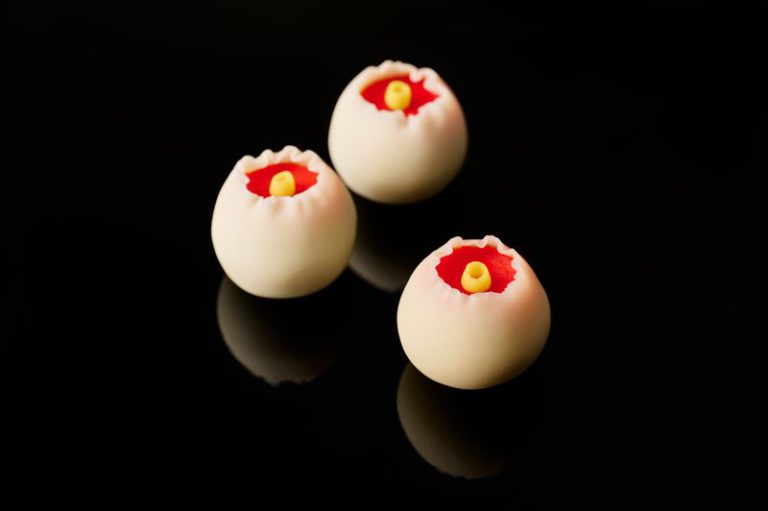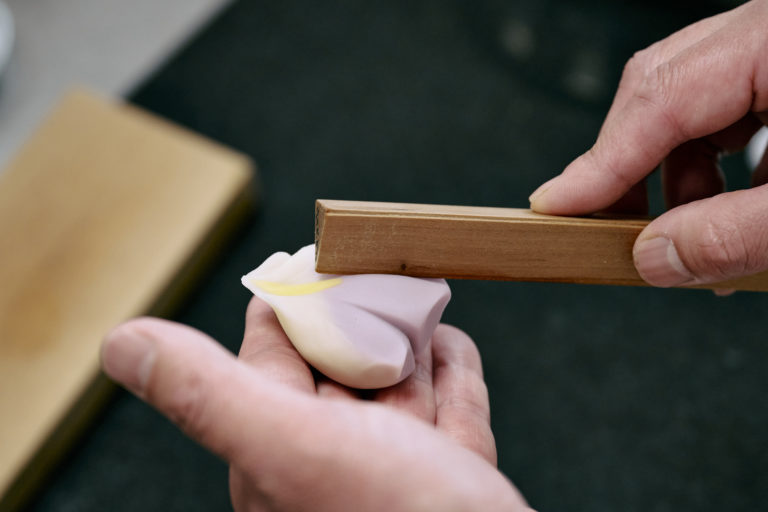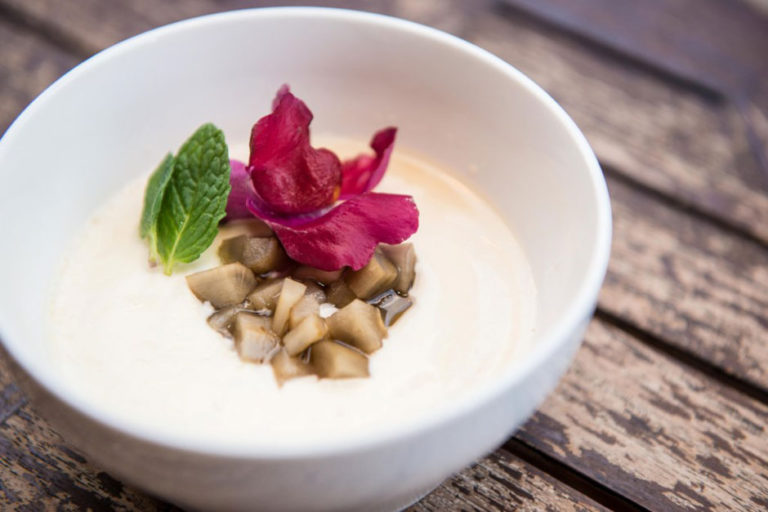Intangible Cultural Heritage – Namagashi with Kamei (Nerikiri/Konashi)


In October 2022, namagashi with a kamei (nerikiri/konashi) was registered as an intangible cultural heritage after a review by the Agency for Cultural Affairs. Namagashi with a kamei refers to traditional Japanese confectionary representing seasonal beauties or Japanese customs in color and shape and is named after its design. The registration was given in recognition of the beauty of the designs and names of namagashi, which have been a part of Japan’s traditional food culture since the Edo period (1603-1868), and of the artisanship with which these designs are delicately and skillfully rendered. With the cooperation of the Japan Wagashi Association and the Agency for Cultural Affairs, here is an introduction to red bean jam and seasonal namagashi that represent a uniquely Japanese sensibility unparalleled worldwide.
Bean jam

●Koshi-an
Koshi-an, made by removing the bean’s skin, lacks viscosity and is meltingly smooth because bean jam particles form and encapsulate the starch that makes up about 60% of the bean’s composition. It is created by scooping out the bean paste without destroying the particles and coating them in sugar syrup.

●Processed bean jam
Koshi-an is difficult to process into namagashi because of its smoothness. Joshi tsunagi no nerikiri-an is made by adding viscous grated yam (such as Chinese yam) as a binder to koshi-an. Other processed bean jam types include nerikiri-an, made by adding gyuhi (a softer variety of mochi) to koshi-an, and konashi, made by adding wheat or rice flour and steaming the mixture.
Seasonal namagashi

●Spring namagashi – Cherry blossoms
A variety of confectionery are made to reflect cherry blossom images, such as Hatsuzakura, Miyamazakura, Yamazakura, Hanagoromo, Hana no Sode, Hitohira, Hana Shigure, Hanaikada, Hanaguruma, Hana no Utage, Ranman, Sao Hime, Yoshino, and many more, depending on the look of the confectionery.

●Tools used for cherry blossom
Triangular bar and round bar

●Summer namagashi – Iris
Irises, including flowers of the same type, come in a variety of kamei, such as Ayame, Hanashobu, Kakitsubata, Karakoromo, Isshi, and Tango. The shapes and shades also vary according to their makers’ personalities.

●Tools used for iris
Cloth, triangular bar, and bamboo spatula

●Autumn namagashi – Chrysanthemum
The chrysanthemum is a symbolic flower of autumn, and it is represented in various images depending on the kamei, including Otomegiku, Ennengiku, Tamagiku, Shiragiku, Yachiyogiku, Itogiku, Korin, Masarigusa, Yowaigusa, Nogiku, Zangiku, Rangiku, Choyo, Chiyo no Kaori, and Hasamigiku.

●Tools used for chrysanthemum
Scissors and wooden stamp

●Winter namagashi – Winter camellia
Early blooming camellia, which evokes a hint of warmth during a cold spell, is represented under the kameis Kantsubaki, Fuyutsubaki, Wabisuke, among others.

●Tools used for winter camellia
Wooden egg and wooden stamp
Thoughts on the charm of namagashi with a kamei, listed as an intangible cultural heritage
We spoke to Mitsuo Yabu, Executive Director of the Japan Wagashi Association, and Hiroko Asakura of the Agency for Cultural Affairs, who have contributed to putting namagashi with a kamei on the register of Intangible Cultural Properties.

“Wagashi has been cultivated and enjoyed along with the lifestyle and culture of the Japanese people for more than 1,000 years. Among the many types of wagashi, such as manju, dango, daifuku, yokan, and monaka, it’s a great pleasure to have namagashi with a kamei, one of the typical wagashi, recognized as a registered Intangible Cultural Property, as I believe it’s important for wagashi to express seasonality,” says Mitsuo.
According to Mitsuo, there are two types of seasonality in the world of wagashi: sakura mochi and kashiwa mochi, which are sold only during certain seasons, and namagashi, which are made from nerikiri-an or konashi to reflect seasonal changes. Each element is an essential part of wagashi. The culture of naming each namagashi is also peculiar to Japan.

“For example, namagashi in the image of a cherry blossom is made in various shapes depending on the artisan’s individuality and is given a kamei such as Sakura, Yoshino, Miyamazakura, Otomezakura, Hanagoromo, or Oborozakura. I think one of the charms of wagashi is that you can enjoy the various imageries and lingering impressions from the kameis.”
While Mitsuo talked about the beauty of namagashi’s expression of seasonality, Hiroko, who belongs to the Agency for Cultural Affairs and is one of the project members involved in registering namagashi as a cultural heritage, shared the importance of the process.

“This registration of namagashi as a cultural heritage focused on the processes of making namagashi’s red bean jam and rendering various designs using techniques and small tools and attaching kameis to them. Nerikiri and konashi are mainly noted for their beautiful visual impression, but they require a high level of skill to make koshi-an from raw beans and processed bean jam by adding grated yam and gyuhi. Artisans use delicate techniques to express seasonal scenes that Mr. Yabu mentioned, using carefully prepared red bean jam,” says Hiroko.



Hiroko further explains, “We hope the registration as a cultural heritage will help a wider range of people discover the wonderful art of namagashi (nerikiri and konashi) with a kamei. The Association of Outstanding Wagashi Artisans, certified as an organization that upholds the highest standards of excellence, is formed by wagashi artisans and their instructors who have passed a rigorous certification examination that evaluates their craftsmanship. The organization has been tirelessly working to promote and educate the public, and we hope everyone will keep an eye on its future activities. The Agency for Cultural Affairs would like to continue to support its efforts. Since establishing the registered intangible cultural heritage system, traditional sake brewing and Kyoto cuisine have so far been registered. I feel that Japan is brimming with other culinary cultures featuring still more wonderful techniques and artistry. As a new department in charge of food culture, we will continue to strive to communicate our food culture both in Japan and abroad in various ways while cherishing the good old traditions.”

Namagashi seem to reflect the seasons within their small designs. They are filled with the thoughts of people who love namagashi, including producers of the beans used to make them, namagashi artisans, those working to carry on the tradition, and consumers. We hope that people in our busy modern lives will take a moment to reflect on the seasons and traditional culture through namagashi and feel the warmth that tea and namagashi bring to their lives.












